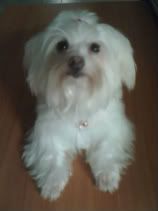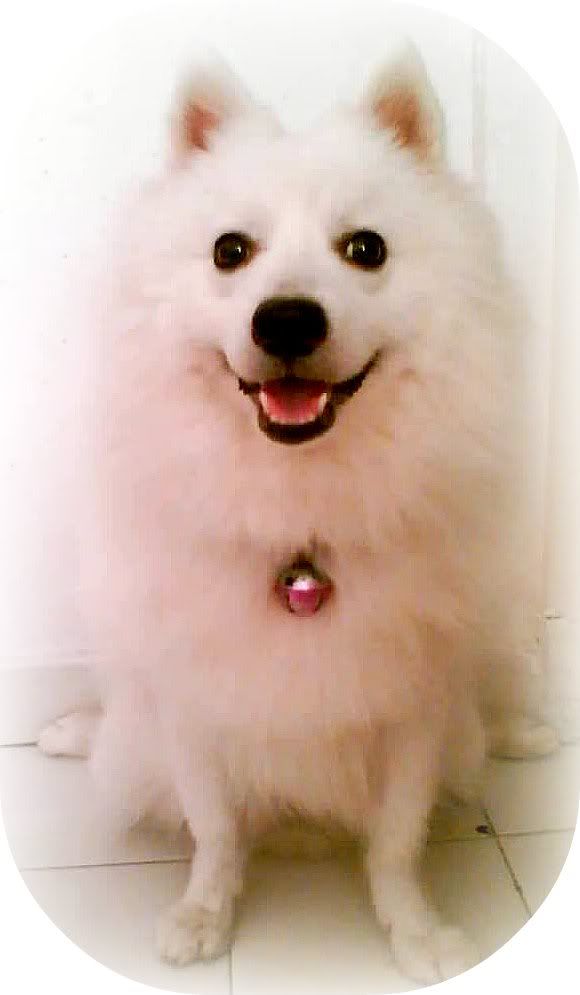Colour Vision
The retina is the part of the eye that does the actual seeing. It lines the back of the inside of the eyeball and detects the light that enters through the lens, which is at the front of the eyeball. The retina is made up of two types of light sensitive cells - rods and cones. Rods detect movement and, being sensitive to very small amount of light, are important for seeing in dark conditions. Cones ‘see’ colour and involved with detailed sight. Because the dogs’ retina has a very high proportion of rods, they see better in the dark and can detect movement more finely than we can. However, dogs have only about one tenth the human number of cones, and do not see colours as well as us. They are able to see shades of gray very well as it is rods which do the work in this case.
The dogs range of colours

Your range of colours

Dogs are a bit like a colour-blind human. People who can see the full range of colours are said to have trichromatic vision; that is they can distinguish three colours of light. In the way that all colours of paint can be mixed from the three primary colours, being trichromatic means we can ‘mix’ the light colours we see to get the full range of colours. Red/green colour blindness is the most common form of colour blindness in humans. Those affected are dichromatic and only perceive two light colours. Dogs are dichromatic and can distinguish only two colours: blue and yellow. They are unable to recognize green, orange or red.
Other cues, such as smell, brightness and position mean that dogs are little hampered by their poor colour vision. Guide dogs may not be able to distinguish between green and red traffic lights but they can be trained to look at the brightness and position of the lights. This, along with the movement and noise of traffic, tell the dog when it is safe to cross the street.
Field of Vision
The position of the eyes determines the field of vision. Human eyes are set straight forward, so that there is considerable overlap in what they see, while dog eyes are usually set toward the side of the head. This angle increases the peripheral vision of the dog. You are unable to see your hand if you place it beside your ear; if you put your hand beside your dogs’ ear he will see it clearly.
Binocular vision occurs where the field of view of each eye overlaps, as ours do, and is necessary for accurate depth perception. The view from the wider-set eyes of dogs has less overlap and less binocular vision and thus poor depth perception. This means that although dogs can see movement well and can see an object approaching them, it is difficult for them to gauge how far away it is or how rapidly it is moving towards them.

Because of their inherent limitations in this area, teaching guide dogs about traffic speed is one of the most difficult, though obviously one of the most important, aspects of their training. The fact that the breeds most commonly used, Labradors and German Shepherds, have relatively forward set eyes helps. Greyhounds, for example, with their wide set eyes would be less suitable.
Visual Acuity
Humans with perfect eyesight are said to have 20/20 vision. This means that they can distinguish letters or objects clearly at a distance of 20 feet. Dogs typically have 20/75 vision. What this means is that they must be 20 feet from an object to see it as well as a human standing 75 feet away. Certain breeds have better visual acuity than others do. Labradors and German Shepherds are bred for better eyesight and have sight that is closer to 20/20 than most other breeds.
All dogs, however, see detail less well than we do – remember the paucity of cones. If you are standing, still and silent, across a field from your dog, he is unlikely to recognize you. He will realise who you are when you move in a way that is peculiar to yourself. If you speak, he will recognise your voice easily at that distance and, if the wind is blowing the right way, he will smell you.
Because of the large number of rods in the retina, dogs see moving objects much better than they see stationary objects. When we watch television, we see a continuous picture, although we know it is made up of a series of frames following each other in rapid succession. A dog can clearly distinguish each individual frame. The ability to see movement so well is useful to guide dogs. They can readily scan movements over a wide area and are very good at interpreting busy environments.
However even this useful ability creates potential problems, because dogs read a great deal into the way we move. Dogs who are unused to children are often confused and upset in their presence - the movements that children make are quite different to those made by adults and are difficult for a dog to interpret. Most guide dog trainers prefer, for this reason, that their dogs spend some time in a household with children before they commence their formal training.
From behind his eyes, your dog is looking out at a world you would hardly recognise. All dogs, but especially trained guide dogs, integrate what they see of their surroundings with a detailed scent map of which we are largely unaware. They are also sensitive to sounds that we cannot detect. The owners of guide dogs are not simply provided with a pair of seeing eyes – as part of the deal they also get a truly remarkable nose and two ultra sensitive ears. No wonder they step forward with such confidence in their canine minders!
By Katherine Nolan









































 Glitterfy.com - Glitter Graphics
Glitterfy.com - Glitter Graphics
No comments:
Post a Comment